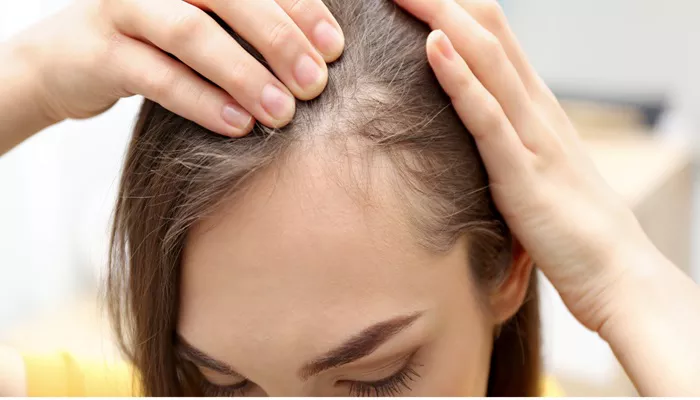Alopecia, a condition characterized by hair loss, can affect individuals at various stages of life. While many associate hair loss with aging, the reality is that alopecia can begin much earlier, even in childhood. The age at which alopecia starts depends on several factors, including genetics, underlying health conditions, and environmental influences. This article explores the different forms of alopecia, the typical ages of onset, and the factors that contribute to early hair loss.
The Many Forms of Alopecia
Alopecia is not a single condition but rather a group of disorders that lead to hair loss. The most common types include:
- Androgenetic Alopecia (Male/Female Pattern Baldness): This hereditary condition is the most prevalent form of hair loss, affecting both men and women.
- Alopecia Areata: An autoimmune disorder where the immune system attacks hair follicles, leading to patchy hair loss.
- Telogen Effluvium: A temporary form of hair loss triggered by stress, illness, or hormonal changes.
- Traction Alopecia: Caused by prolonged tension on the hair due to tight hairstyles.
- Scarring Alopecia: A rare form where hair follicles are destroyed and replaced by scar tissue.
Each type of alopecia has a different typical age of onset, influenced by genetic predisposition, lifestyle, and overall health.
Childhood and Adolescent Hair Loss
Contrary to popular belief, alopecia can begin in early childhood. Some children experience hair loss due to autoimmune conditions like alopecia areata, which can appear as early as infancy. While rare, cases of babies born with congenital alopecia (absence of hair at birth) also exist.
In older children and teenagers, hair loss may be linked to:
- Alopecia Areata: This condition often first appears in childhood or adolescence, with sudden round patches of hair loss.
- Trichotillomania: A psychological disorder where individuals compulsively pull out their hair, commonly seen in adolescents.
- Nutritional Deficiencies: Poor diet or eating disorders can lead to hair thinning in growing children.
- Medical Treatments: Chemotherapy or radiation for childhood cancers can cause temporary hair loss.
Parents noticing unusual hair shedding in their children should consult a dermatologist to determine the cause and appropriate treatment.
Early Adulthood: When Genetic Hair Loss Kicks In
For many individuals, the first signs of androgenetic alopecia (pattern baldness) appear in their 20s or 30s. Men often experience a receding hairline or thinning at the crown, while women may notice widening part lines or overall thinning.
Factors contributing to early-onset hair loss in young adults include:
- Genetics: A family history of baldness significantly increases the risk.
- Hormonal Changes: Conditions like polycystic ovary syndrome (PCOS) in women or elevated dihydrotestosterone (DHT) in men can accelerate hair loss.
- Stress and Lifestyle: High stress, poor diet, and smoking can worsen genetic hair loss.
Early intervention with treatments like minoxidil, finasteride, or low-level laser therapy can help slow progression.
Midlife Hair Loss: Hormonal Shifts and Aging
By the age of 40 to 50, many individuals experience noticeable hair thinning due to hormonal changes and natural aging. Androgenetic alopecia becomes more pronounced, and women may see increased shedding during menopause due to declining estrogen levels.
Other contributing factors in midlife include:
- Thyroid Disorders: Hypothyroidism or hyperthyroidism can lead to diffuse hair loss.
- Chronic Illnesses: Diabetes, lupus, and other autoimmune diseases may trigger hair thinning.
- Medications: Blood pressure drugs, antidepressants, and other medications list hair loss as a side effect.
At this stage, treatments like platelet-rich plasma (PRP) therapy, hair transplants, or hormone replacement therapy (for women) may be considered.
Late-Onset Alopecia: Hair Loss in the Elderly
While hair thinning is a natural part of aging, some seniors develop significant alopecia later in life. Age-related hair loss is often due to:
- Reduced Hair Follicle Regeneration: Over time, hair follicles shrink and produce finer, shorter hairs.
- Poor Scalp Circulation: Decreased blood flow to the scalp can weaken hair growth.
- Chronic Health Conditions: Long-term illnesses and medications contribute to persistent shedding.
Elderly individuals may opt for wigs, scalp micropigmentation, or supportive hair care routines to manage thinning hair.
Preventing and Managing Alopecia at Any Age
While some forms of alopecia are unavoidable, early detection and proper care can make a difference. Key strategies include:
- Healthy Nutrition: A diet rich in vitamins (especially Biotin, Iron, and Vitamin D) supports hair health.
- Stress Management: Techniques like meditation and exercise can reduce stress-related hair loss.
- Gentle Hair Care: Avoiding harsh chemicals, heat styling, and tight hairstyles helps prevent damage.
- Medical Consultation: Dermatologists can diagnose the specific type of alopecia and recommend targeted treatments.
Conclusion
Alopecia can begin at any age, from infancy to old age, depending on the underlying cause. Recognizing the early signs and seeking professional advice can help manage hair loss effectively. Whether genetic, autoimmune, or stress-related, understanding the triggers and available treatments empowers individuals to take control of their hair health at every life stage.
If you or a loved one is experiencing unusual hair loss, consulting a specialist early can lead to better outcomes and improved confidence. Hair is more than just aesthetics—it’s a reflection of overall well-being, and addressing hair loss proactively ensures a healthier future.
Related Topics:
- Will Hair Loss Due to Medication Grow Back
- Is Hair Loss a Sign of Iron Deficiency
- Is Hormonal Hair Loss Reversible


